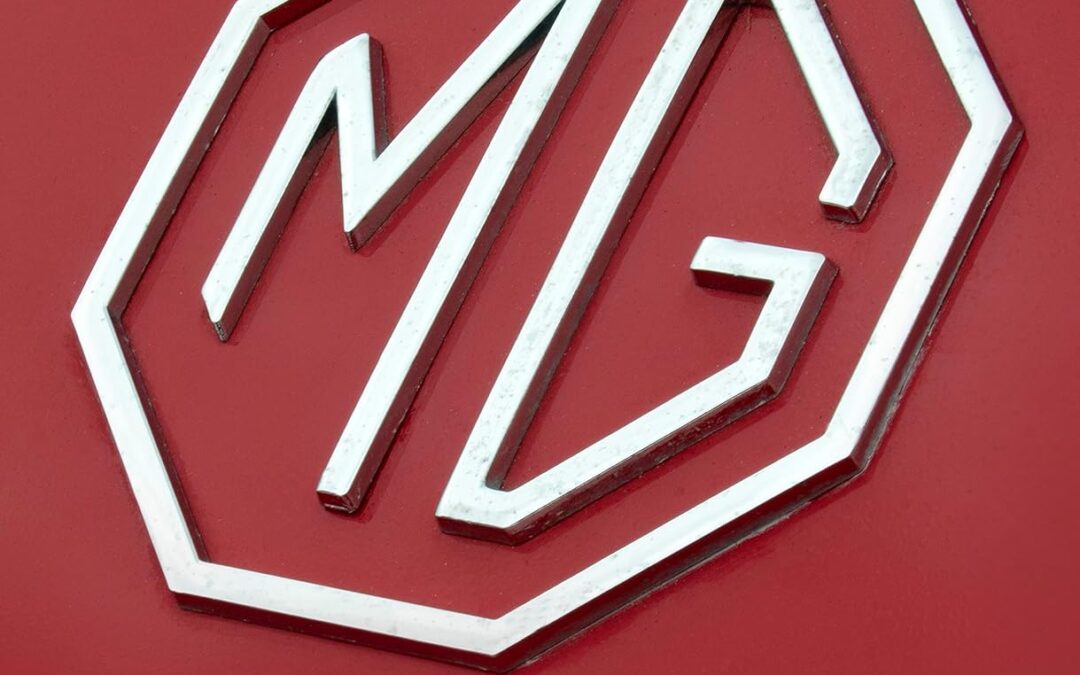
Celebrate and explore 100 years of MG cars with this impressive volume featuring expert commentary, historical images, period ads, and contemporary photography.
For many car enthusiasts, MG is synonymous with “sports car.” It is often credited with igniting a passion for European cars in postwar America at a time when roads were otherwise filled with the lumbering output of Detroit. In MG’s native England, the company’s cars filled roles from family transport to competition driving.
MG, as we think of it today, began in the 1920s, but its roots go back even further with a young William Morris. Initially working in the booming bicycle trade, he eventually branched into motorcycle and car repair with the fledgling Morris Garage (hence, MG) in 1907. By the mid 1920s, the successful Morris Garages was in a position to begin manufacture of its own cars under the MG name.
MG grew significantly in the years before World War II, building and racing its classic Midgets and Magnettes. World War II provided challenging times for the company as it did for the UK and much of the world. In the postwar period, a focus on sales outside England, and particularly in the United States, both defined MG’s product line and ensured its success. Legendary cars followed, including MG TC, TD, and TF followed by thoroughly modern MGA, MGB, MGB GT, and Midget. Magnettes and the 1100 offered options for those wanting sedans and more practical cars.
MG ownership moved through a number of UK companies in the postwar period as well as ownership by BMW and today’s SAIC, a Chinese-based company through which it operates as MG Motor. Highlights along the way included the MGB GT V8, MG Metro Group B rally car, and MGF. Based on its latest state-of-the-art EV platform, MG will soon launch an all-new roadster coming full circle over its century in business.
Authored by marque expert David Knowles, The MG Century: 100 Years of Safety Fast! is a fitting celebration of one of the automotive world’s oldest and most beloved brands—and a must-have for every car enthusiast.
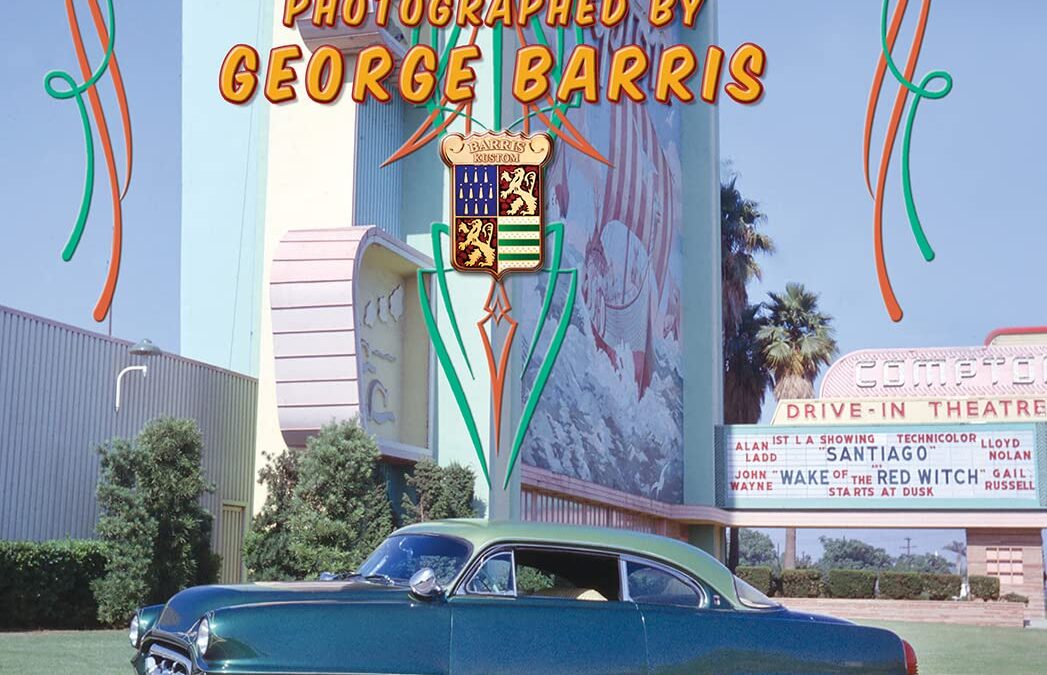
George Barris is indisputably the “King of the Kustomizers,” the most phenomenal kustom car builder ever.
This book collects the incredible photos of early hot rods and custom cars taken by George Barris in the 1950s to early ’60s.
As a sculptor of cars, George Barris knew well the angles and lighting that would bring out the beauty of these creations, both his own and those of others.
A treasury of images, the photographs in this volume capture the early parts of the kustom culture movement, when people wanted to stylize their cars and make them look more sleek, different, powerful and personal.
Early Hot Rod and Kustom Kulture features hundreds of photos including notable customizers from all over the country, in addition to Barris’ own creations. Many of these unique photographs have never been seen before. Barris also photographed the people and personalities of this iconic time, capturing builders and owners, as well as pinups and models.
George captured all the styles of the early era of customs and hot rods, both East Coast and West Coast, reflecting the wide range of trends and scenes. A beautiful collection seen through the lens of master customizer George Barris.
Kustom Photography
George Barris began making custom cars in the early 1940s with his brother Sam. George bought a German-made twin lens reflex Rolleiflex camera and began photographing cars as a way to promote his business. It then became a way to educate other kustomizers. George recorded and wrote how-to stories offering information and photos on kustomizing techniques, sharing his work as well as that of other builders from all over the country. George captured thousands upon thousands of moments in time when the beauty, style or sheer outrageousness of an automobile was visible only to a gathered crowd.
George Barris’ artful documentation of early car culture serves as an important chronicle of custom car history, capturing the best the best of burgeoning hot rod and kustom kulture.
His first work to appear in print was virtually concurrent with the beginning of auto enthusiast magazines known as “little pages” such as Hot Rod, Car Craft, Custom Cars, Hop up, Rod & Custom, Motor Life, Spotlite and others. Although much of his fame surrounds the incredible kustom cars he built, George’s endeavors as a photographer are just as important as any other facet of his life.
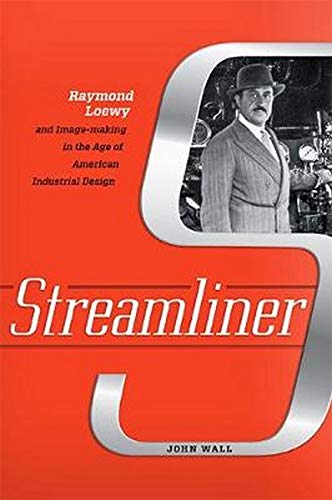
The true story of Raymond Loewy, whose designs are still celebrated for their unerring ability to advance American consumer taste.
Born in Paris in 1893 and trained as an engineer, Raymond Loewy revolutionized twentieth-century American industrial design. Combining salesmanship and media savvy, he created bright, smooth, and colorful logos for major corporations that included Greyhound, Exxon, and Nabisco. His designs for Studebaker automobiles, Sears Coldspot refrigerators, Lucky Strike cigarette packs, and Pennsylvania Railroad locomotives are iconic. Beyond his timeless designs, Loewy carefully built an international reputation through the assiduous courting of journalists and tastemakers to become the face of both a new profession and a consumer-driven vision of the American dream.
In Streamliner, John Wall traces the evolution of an industry through the lens of Loewy’s eclectic life, distinctive work, and invented persona. How, he asks, did Loewy build a business while transforming himself into a national brand a half century before “branding” became relevant? Placing Loewy in context with the emerging consumer culture of the latter half of the twentieth century, Wall explores how his approach to business complemented―or differed from―that of his well-known contemporaries, including industrial designers Henry Dreyfuss, Walter Teague, and Norman Bel Geddes. Wall also reveals how Loewy tailored his lifestyle to cement the image of “designer” in the public imagination and why the self-promotion that drove Loewy to the top of his profession began to work against him at the end of his career. Streamliner is an important and engaging work on one of the longest-lived careers in industrial design.
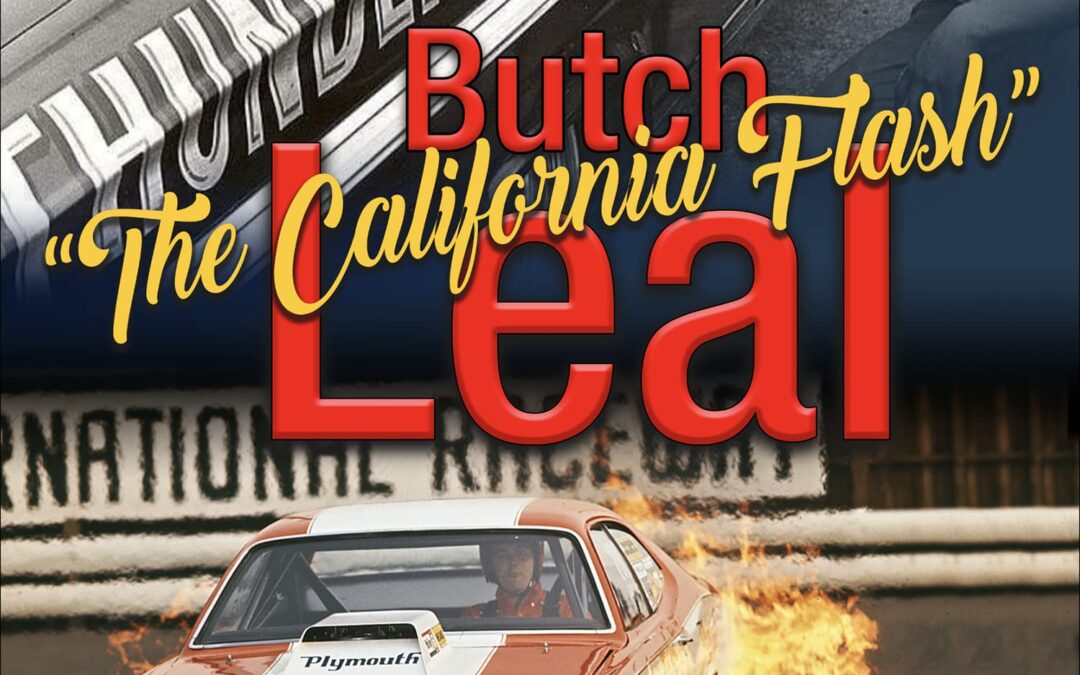
Check out the first ever biography on the popular drag racer, Butch “The California Flash” Leal.
Born and raised in central California, Larry “Butch” Leal was obsessed with cars from a very early age. What began with field cars turned into hard work and new Chevrolets. This took place when the golden era of drag racing was in its infancy, and Leal joined with enthusiasm. He performed well at the track with his early Chevys and had an impressive number of wins before he was out of high school. His success brought him plenty of attention and collaboration with other big names in the sport.
In 1963, GM pulled out of the sport on an official basis. As a result, Butch (at age 19) teamed up with Mickey Thompson and joined the Ford camp, securing a ride with the factory team and its new Thunderbolts for 1964. After his success that season, including winning the Super Stock (S/S) class at the 1964 NHRA US Nationals in Indianapolis, Chrysler came calling, and Butch signed on to race the new altered-wheelbase cars in match races for 1965, as the NHRA did not have a class for these new “funny” looking cars. While Leal dabbled again with Ford and Chevrolet later, his relationship with Chrysler lasted well into the following decades, running both Funny Cars and Super Stockers.
Penned by talented automotive historian Bob McClurg, who was there for it all, and featuring full collaboration with the book’s subject, Butch “The California Flash” Leal covers the span of his fascinating career during arguably the most interesting era in drag racing history. Butch was an 11-time NHRA champion and 4-time recipient of Car Craft magazine’s All-Star Driver of the Year award in a career that spanned the 1960s through the 1990s. It’s all here, the events, great vintage photography, and the stories from one of the best storytellers the NHRA has ever known. Add this entertaining volume to your drag racing library today.
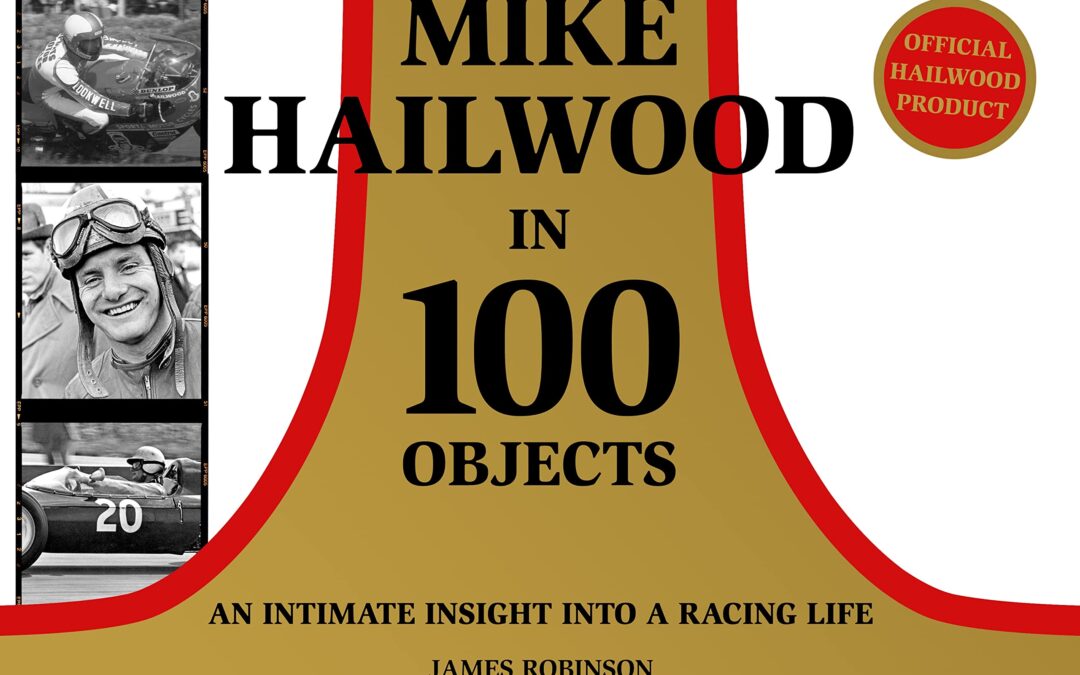
An intimate insight into a racing life
Mike Hailwood is a legend. Arguably the world’s greatest ever motorcycle racer, he transcended eras and generations. His two-wheeled racing career began – and he initially made his name – aboard big, British single cylinder machines, then he took to Japanese and Italian four-stroke multis, before finishing on booming V-twins and two-strokes.
He went from the black-and-white era, from one-colour dark leathers and pudding basin crash helmets, to the multicoloured, full-face helmeted, sponsorship driven days of the late 1970s. He found time to do some car racing too, recording a third at Le Mans in 1969 driving a Ford GT40, winning the 1972 Formula 2 European Championship and competing in 50 F1 Grands Prix, his debut in 1963, his last in 1974.
Though the car stats are impressive, the motorcycle ones are astonishing – nine world championships, 76 GP wins, 14 TT victories, his TT victories separated by 18 years, the first 1961, the last 1979. On top of this he was awarded the MBE and then the George Medal for his bravery in rescuing fellow F1 driver Clay Regazzoni in 1973.
It is almost impossible to comprehend the tragic irony that the life of this man, who had risked and survived so much, a hero to thousands for his derring-do, was curtailed as he drove the family car to collect a fish and chip takeaway. That his daughter Michelle died alongside him adds an extra layer to the tragedy.
Mike’s son David survived the accident and here has allowed access to the family’s treasure trove of personal artefacts. These range from the mundane to the magnificent but together they tell the incredible story of Mike the Bike.
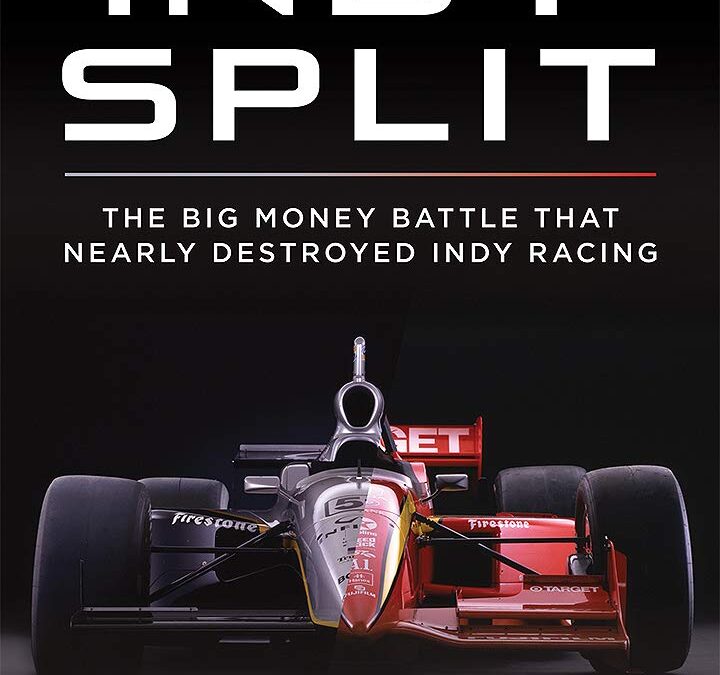
Indy Split is a fascinating, authoritative and overdue account of the big money battle that nearly destroyed the sport of Indy car racing.
In the new book, long-time motorsports reporter John Oreovicz dives deep into the divisive battle between CART and the Indy Racing League. With insightful reporting, Oreovicz recounts the political infighting within the industry which climaxed with a 12-year “Split” from 1996 to 2007 between competing forms of Indy car racing and prevented the sport from achieving its potential.
The book traces the roots of Indy car racing’s dysfunction, which began in 1945 when Tony Hulman rescued the Indianapolis Motor Speedway from potential redevelopment. Over the next 75 years, the Hulman-George family used the stature of the Speedway to carve out a powerful position in American auto racing that sometimes resulted in conflict with Indy car competitors. A volatile period in the late 1970s sparked the formation of Championship Auto Racing Teams (CART), and tensions ramped up even more when Hulman’s grandson, Tony George, assumed power in 1990.
In unprecedented detail, Indy Split uncovers how the Split forced Indy car fans, sponsors, broadcasters and participants to choose sides. The book brings to light the confusion and animosity which caused unnecessary damage to the sport, and covers how negotiations driven by legendary racer Mario Andretti and actor/racer Paul Newman ended the Split in 2008, only to have George to walk away less than three years later. The long struggle for stability was finally resolved in 2020 when Roger Penske acquired IMS and the IndyCar Series, securing a bright future for the Speedway, the Indy 500, and the sport.
Longtime motorsports reporter John Oreovicz began attending the Indianapolis 500 as a teenager in the late ‘70s, allowing him to witness the sport’s growth as an avid fan before documenting its decline as a journalist. With a foreword by Motorsport Hall of Fame inductee Robin Miller, arguably Indy car racing’s most vocal advocate, this is the real story of The Split from one of the sport’s most respected voices
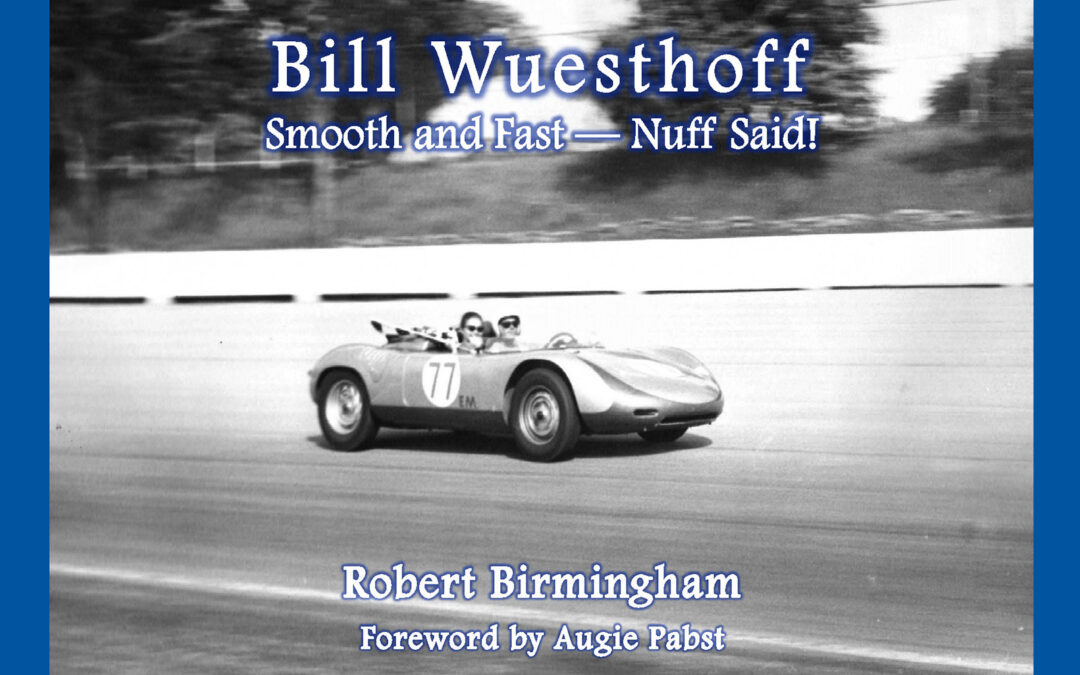
Bill Wuesthoff was among America’s best sports car racers beginning in the mid-1950s and culminating in 1964 after winning the United States Road Racing Championship, USRRC Under 2-liter title. Throughout his ten years competing, Bill kept a low profile as could be expected from someone who enjoyed the battle but shunned the spotlight.
Robert Birmingham’s personal relationship with Bill Wuesthoff dates back to 1959 and as much as anyone today, recalls Bill’s “smooth and fast” competitions from Sebring and Pensacola, Florida, Watkins Glen and Bridgehampton in the east, to Riverside, Laguna Seca, California and Continental Divide in Colorado out west and countless road-racing venues in between. Internationally, he competed at Mosport, Canada, at Nürburgring in Germany, and in Nassau for the popular yearend Speed Week series.
Bill enjoyed success co-driving with his long time close personal friend Augie Pabst, also with Harry Heuer, Chuck Dietrich, Jim Jeffords, Fred Gamble, Bruce Jennings, Frank Rand, and Joe Buzzetta, all nationally ranked competitors of that era. Team car owners included Heuer’s Meister Bräuser Scarab team, Luigi Chinetti’s North American Racing Team, Ollie Schmidt, Carl Haas, Camarodi USA, and Eddie Weschler.
A brief history of Bill’s relationship with to automobiles began at a very early age, stemming from his father who was an early Milwaukee Region SCCA member. Post-racing activities centered on automobiles, his professional business, and sons’ Karl and Lee’s ten years of highly competitive off-road racing.
Many never-before-published photographs, together with numerous documents and other race-related mementos, total over 150, along with Bill’s ten-year race history. In recent years, there has been a growing interest in the recovery of long-forgotten sports car events, tracks and of course, competitors of the 1950s and 1960s. Smooth and Fast, Nuff Said! will be a wonderful addition to any early motorsports collection.
Full color, hardcover coffee table book.
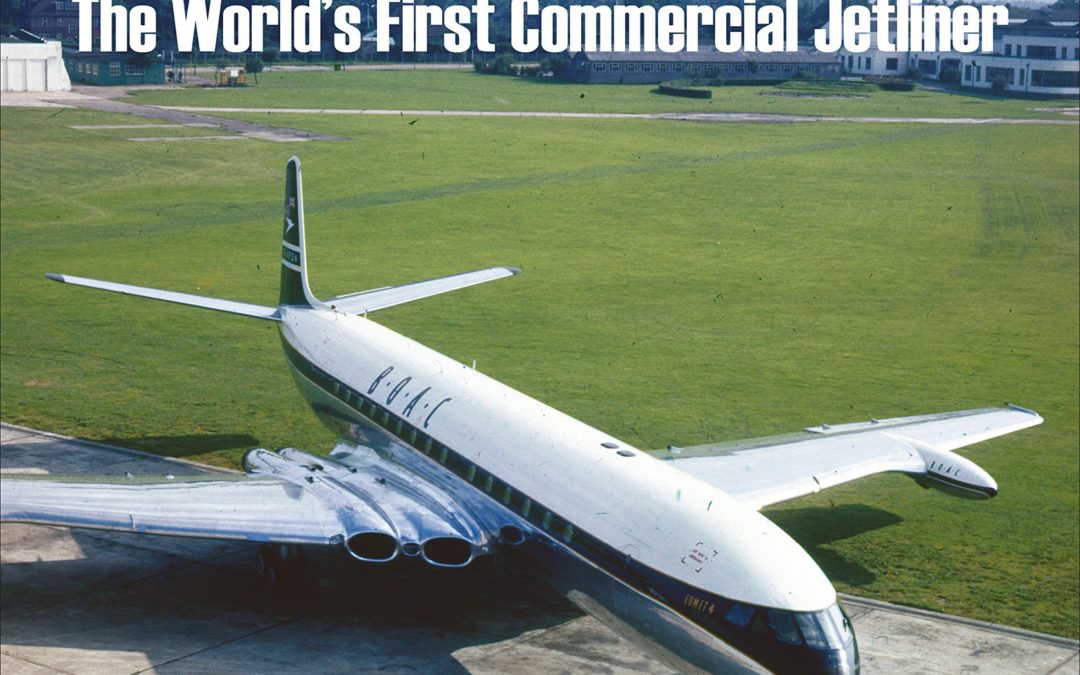
The world got a little smaller in July 1949 when the first jet-powered airliner took to the skies barely four years after the end of the Second World War.Not only was the de Havilland Comet 1 was a lot faster than previous airliners, it could fly higher and further. It was packed with new technology but, perhaps most importantly for those early passengers, it was a quiet, luxurious and even pleasant experience, something that could never be said for the noisy piston-engine aircraft that came before.The Comet’s leadership in jet travel for the future was assured until aircraft began crashing. The first ones were put down to pilot error but two disastrous events in 1954 grounded the fleet and Britain’s advantage over the rest of the world was lost. Boeing caught up with its ubiquitous 707 and the Comet was destined to become but a memory.However, rising from the ashes came a new Comet – one that was bigger and more powerful than before and designed for completely different roles. Where the first Comets had provided an expensive and plush way to travel for the rich few, the new Comet 4s carried more passengers to a multitude of destinations inevitably becoming key carriers for the early package holidaymakers. At the same time they became vital strategic transports for the RAF as the British Empire receded.This book tells the full story of the world’s first jet-powered airliner, from its remarkable beginnings, through its early flight trials program to its entry into service. The type’s military career is also covered, as is its construction; also included in this volume are details of the numerous variants produced and those still surviving as exhibits today. There are also twenty-four superb artworks by world-renowned aviation illustrator Juanita Franzi.

Before regulations constricted automobile design, cars were small, lithe, and voluptuous. Engines were analog, transmissions were manual, and the experience was visceral. For much of Porsche’s history, their use of air cooled engines helped to differentiate them from their competition. Air cooled engines, which were simple, lightweight, and great sounding, powered some of the marque’s most winning, expressive, and iconic street and race cars.In this book, the legendary 356, 550 Spyder, 911, The DKW-Porsche Special, Carrera GTS, Carrera 6, 910, 914, and 959 are represented in bold, evocative works of art. The illustrations in this book were digitally painted in both photorealistic and graphic styles using Adobe Illustrator, Photoshop, and Sketch. In addition to the finished pieces, many images of the works in progress offer glimpses into the artist’s process. A chapter detailing his techniques is included as well.
About the Artist: Since childhood, Geoff wanted to study car design, but always found reasons not to follow that dream… opting to follow a more practical route instead. After graduating from the prestigious School of Visual Arts (SVA), Geoff spent several years as a graphic designer. In the early 90’s, a promising “new” field (interactive media) piqued his interest, so he returned to SVA to earn a graduate degree in Computer Art. He then embarked on a career in user experience design; first with Time-Warner (where he worked on innovations such as the world’s first interactive TV system), then with The Walt Disney Company, Pioneer Electronics, and others. In his late 40’s, his childhood passion for cars finally motivated him to leave his career and enroll in ArtCenter College of Design’s highly respected Transportation Design program. While in school, Geoff began sketching classic cars as a way to hone his visual communication skills. But as time passed, this activity grew into a great labor of love. Geoff has earned many awards (and patents) for his work, and has been featured in Petrolicious, Worth Magazine, Panorama Magazine, and his artwork is displayed publicly and privately throughout the United States.
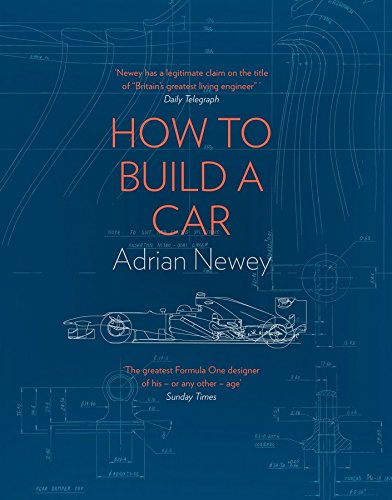
IN STOCK NOW!
The world’s foremost designer in Formula One, Adrian Newey OBE is arguably one of Britain’s greatest engineers and this is his fascinating, powerful memoir. How to Build a Car explores the story of Adrian’s unrivaled 35-year career in Formula One through the prism of the cars he has designed, the drivers he has worked alongside and the races in which he’s been involved. A true engineering genius, even in adolescence Adrian’s thoughts naturally emerged in shape and form – he began sketching his own car designs at the age of 12 and took a welding course in his school summer holidays. From his early career in IndyCar racing and on to his unparalleled success in Formula One, we learn in comprehensive, engaging and highly entertaining detail how a car actually works. Adrian has designed for the likes of Mario Andretti, Nigel Mansell, Alain Prost, Damon Hill, David Coulthard, Mika Hakkinen, Mark Webber and Sebastian Vettel, always with a shark-like purity of purpose: to make the car go faster. And while his career has been marked by unbelievable triumphs, there have also been deep tragedies; most notably Ayrton Senna’s death during his time at Williams in 1994. Beautifully illustrated with never-before-seen drawings, How to Build a Car encapsulates, through Adrian’s remarkable life story, precisely what makes Formula One so thrilling – its potential for the total synchronicity of man and machine, the perfect combination of style, efficiency and speed.
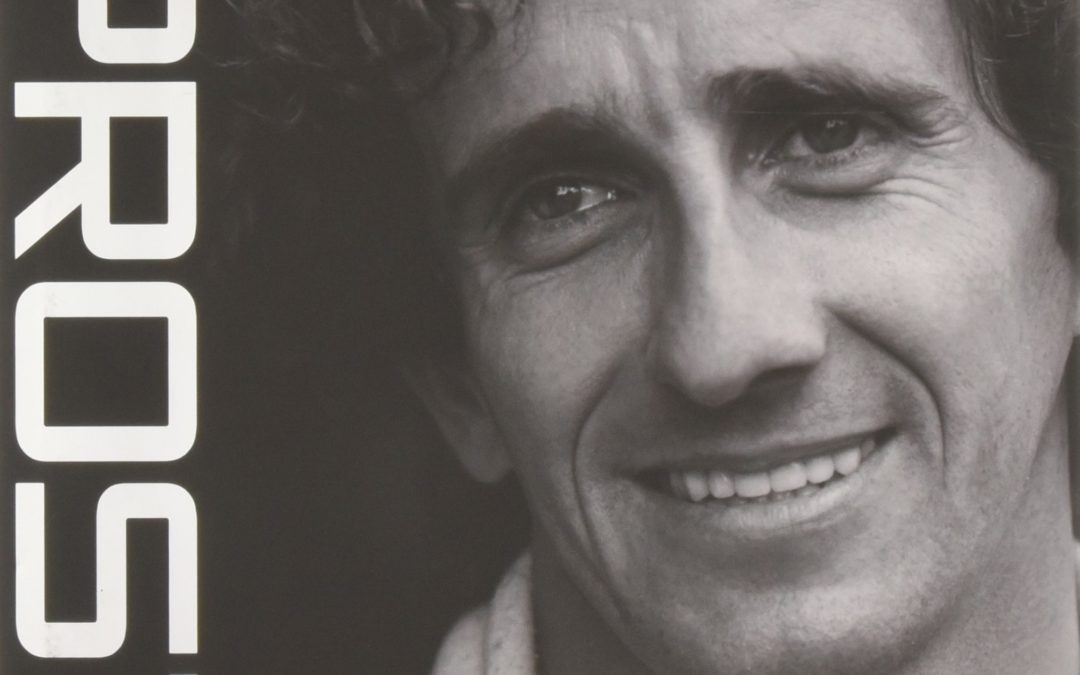
Four-time Formula One Drivers’ Champion Alain Prost is one of the best racing drivers of all time. Having discovered karting at the age of 14 during a family holiday, Prost progressed through motorsport’s junior ranks, winning the French and European Formula Three championships, before joining the McLaren Formula One team in 1980 at the age of 24. In his six seasons with McLaren, he won 30 races and three driving titles and in 1985 he became the first French World Champion. In 1986 he became the first back-to-back champion since Jack Brabham 26 years earlier. In 1987, his 28th Grand Prix victory beat Jackie Stewart’s 14-year-old record. However, in 1988 his new teammate Ayrton Senna won eight races and the driving title. Thus began the sensational rivalry that conspired to push two of the sport’s greatest drivers to unprecedented heights of success and controversy, and the most bitter feud in Formula One history.

The annual Temporada (racing season) created a transition in Argentine motor sport. In earlier years racing circuits were primarily on rough tracks, with cars designed to cope with poor surfaces. Lacking the resources or technology needed to create bespoke circuits, Argentina looked to create racing venues from what it already had: public paved parks. After WWII, the Temporadas were organised in the Torreon in Mar del Plata, Parque Independencia in Rosario, Palermo, Constanera and Retiro in Buenos Aires, and Sarmiento in Cordoba. Thanks to these races, held in public parks and on public roads, Argentina began to be seen as a potential destination for a Formula 1 Grand Prix and for a round of the world sports car championship, the Beunos Aires 1000km. The circuits hosted the likes of Billoresi, Varzi, Farina, Wimille, Ascari, Moss and Prince Bira, and arguably taught Juan Manuel Fangio how to drive race cars. Wonderfully illustrated with 220 contemporary photographs, including many that have never been published before: images that will take you back in time, to the unique atmosphere of top motorsport in South America from 1950 to 1960.
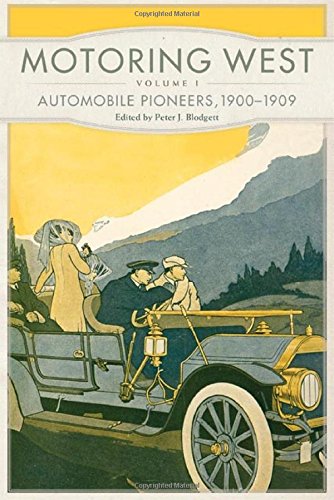
In the first years of the twentieth century, motoring across the vast expanses west of the Mississippi was at the very least an adventure and at most an audacious stunt. As more motorists ventured forth, such travel became a curiosity and, within a few decades, commonplace. For aspiring western travelers, automobiles formed an integral part of their search for new experiences and destinations—and like explorers and thrill seekers from earlier ages, these adventurers kept records of their experiences. The scores of articles, pamphlets, and books they published, collected for the first time in Motoring West, create a vibrant picture of the American West in the age of automotive ascendancy, as viewed from behind the wheel.
Documenting the very beginning of Americans’ love affair with the automobile, the pieces in this volume—the first of a planned multivolume series—offer a panorama of motoring travelers’ visions of the burgeoning West in the first decade of the twentieth century. Historian Peter J. Blodgett’s sources range from forgotten archives to company brochures to magazines such as Harper’s Monthly, Sunset, and Outing. Under headlines touting adventures in “touring,” “land cruising,” and “camping out with an automobile,” voices from motoring’s early days instruct, inform, and entertain. They chart routes through “wild landscapes,” explain the finer points of driving coast to coast in a Franklin, and occasionally prescribe “touring outfits.” Blodgett’s engaging introductions to the volume and each piece couch the writers’ commentaries within their time.
As reports of the region’s challenges and pleasures stirred interest and spurred travel, the burgeoning flow of traffic would eventually and forever alter the western landscape and the westering motorist’s experience. The dispatches in Motoring West illustrate not only how the automobile opened the American West before 1909 to more and more travelers, but also how the West began to change with their arrival.
Autobooks-Aerobooks 2900 W. Magnolia Blvd. Burbank, CA 91505 (818) 845-0707 Hours: Tuesday-Friday 10:00 AM – 6:00 PM Saturday 10:00 AM – 6:00 PM Closed Sunday and Monday Accept Credit Cards gift cardYES, We have Gift Cards - Click Here AUTOBOOKS IS OPEN...















